TORAJA TREKKING TOURS
08 DAYS – 07 NIGHTS
Organizing Sulawesi tours within Toraja Trekking tours covering Lempo, Batutumonga, Lokomata, Tikala, Limbong, Ma’dong, Dende, and beyond tours destination.
TORAJA TREKKING TOURS – 08 Days – 07 Nights.
Makassar – Rantepao – Batutumonga – Limbong – Dende – Pana – Rantepao
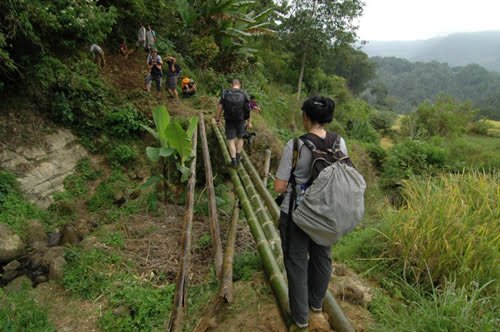
The Torajan bamboo bridge, also known as the “Jembatan Bambu Toraja,” is an iconic architectural and cultural feature found in the highlands of Tana Toraja, South Sulawesi, Indonesia. These bridges are often constructed using bamboo poles and ropes and reflect the Torajan people’s ingenuity and harmony with nature. Here’s an overview of the bamboo bridge’s significance and features:
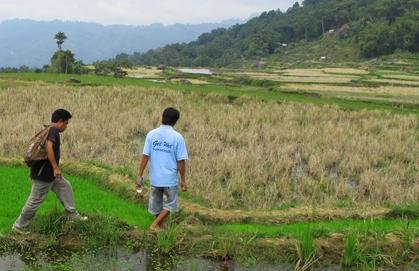
Hiking Toraja, Trails range from easy village walks to more strenuous routes through the highlands, such as hiking to Batutumonga on the slopes of Mount Sesean.
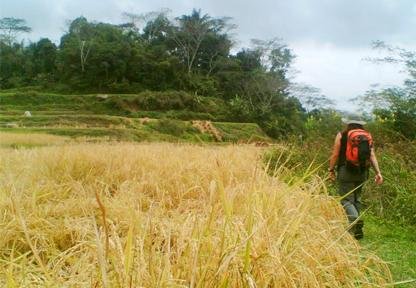
The Torajan Trekking area is famous for its stunning landscapes, traditional villages, and the distinctive Torajan culture, known for elaborate funeral rites and unique architecture.

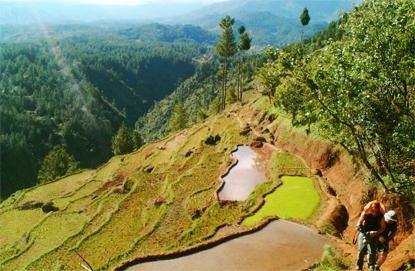
Trekking in Tana Toraja, South Sulawesi, offers an immersive journey through stunning landscapes and cultural heritage. Known for its unique culture, traditional architecture, and breathtaking natural beauty, the region provides diverse trekking experiences suitable for various fitness levels.
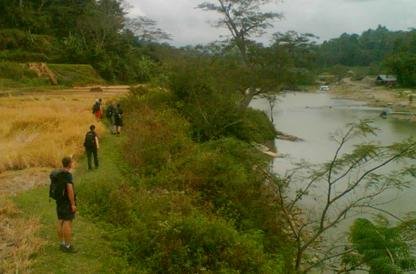
The Sa’dan River, located in the highlands of Tana Toraja in South Sulawesi, Indonesia, offers a captivating trekking experience that combines stunning natural landscapes with rich cultural heritage. The river meanders through lush valleys, terraced rice fields, traditional Torajan villages, and sacred burial sites, making it a prime location for adventurers and culture enthusiasts alike.
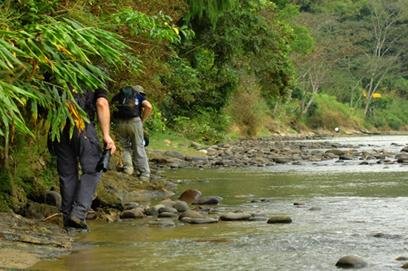
Trekking Torajan rice field is wonder through vibrant green rice terraces cascading down the hillsides. Marvel at panoramic views of valleys, rivers, and traditional villages. Walk along trails bordered by towering bamboo forests and misty mountains.
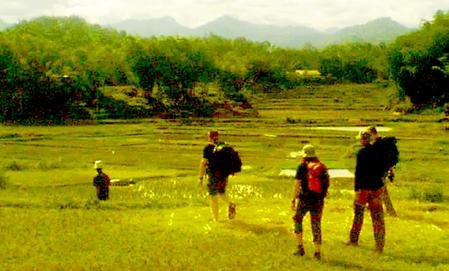
TOUR PRICES :
- Open trip : IDR.
- Private trip : IDR.
Highlights of Toraja Trekking Tours
1. Traditional Villages
- Ke’pe: Starting point, surrounded by scenic rice terraces and tongkonan houses.
- Limbong: A serene village offering insight into the traditional Torajan way of life, including weaving and farming practices.
- Madong: Nestled in the highlands with stunning views, known for its warm hospitality.
- Dende: Famous for its proximity to ancient stone graves and unique cultural practices.
- Pana: Highlights include hanging graves and the iconic baby tree graves, reflecting Torajan burial customs.
- Salu: A picturesque village surrounded by lush greenery, offering a glimpse into daily Torajan life.
2. Unique Burial Traditions
- Hanging Graves: Coffins suspended on cliffs, a hallmark of Torajan burial rites.
- Stone Graves: Carved into cliffs or large rocks, these graves showcase intricate artistry.
- Baby Tree Graves: Reserved for infants, these graves are carved into tree trunks, symbolizing a return to nature.
3. Stunning Landscapes
- Rice Terraces: Trekking routes are lined with emerald-green terraces, particularly vibrant during the planting season.
- Bamboo Forests: A calming trek through shaded pathways surrounded by towering bamboo.
- Panoramic Views: From highland trails like Batutumonga and Madong, enjoy breathtaking vistas of valleys and mountains.
4. Cultural Experiences
- Traditional Tongkonan Houses: Visit elaborately designed ancestral homes central to Torajan culture.
- Weaving and Coffee Cultivation: Interact with locals to learn about traditional weaving techniques and coffee farming.
- Local Markets: Explore bustling markets in Rantepao for unique handicrafts and Torajan delicacies.
5. Adventure and Nature
- Waterfalls: Discover hidden waterfalls, perfect for a refreshing break during the trek.
- Forests and Wildlife: Trek through tropical forests, home to diverse flora and fauna.
6. Authentic Homestays
- Stay in tongkonan houses and village homestays for an immersive cultural experience.
- Enjoy local meals prepared with fresh, organic ingredients by the villagers.
